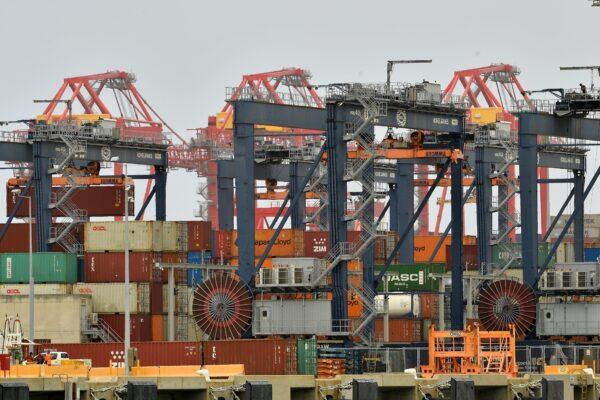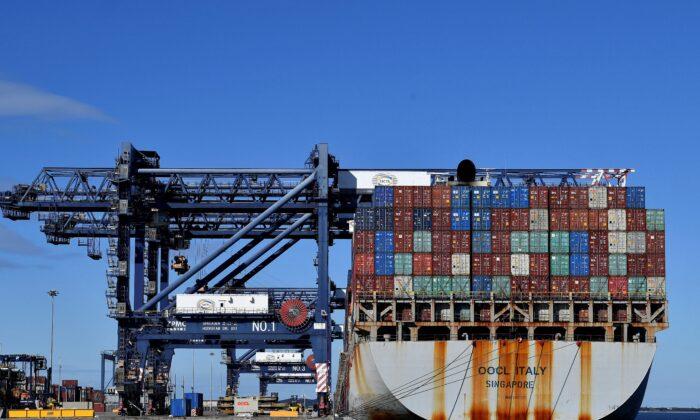Port inefficiencies cost the Australian economy about $600 million (US$414 million) per year, causing consumers to pay more for imported goods.
Currently, Australia relies on port activities greatly, as exports account for 20 percent of the country’s GDP, while imports equate to 16 percent.
In the 2018-2019 financial year, ports handled 1.7 billion tonnes of freight with around $573 billion worth of cargo.
The commission projected that by 2050, the volume of container freight moving through the Port of Brisbane would increase by over three times, while Melbourne and Sydney ports would see a nearly 300 percent and 50 percent rise, respectively.
Poor Port Performance
The Productivity Commission found that compared to their international peers, Australian ports took longer to load and unload ships even after factoring in the ship and call size.In addition, the performance of Australian ports dropped when the ship size increased.
To illustrate, it takes the Port of Melbourne 27.3 hours and the Port of Sydney, 29.7 hours on average to turn around a ship that carries between 1,501 and 5,000 containers, compared to the international average of 24.7 hours.
For ships with loads between 5,001 and 8,500 containers, the average turnaround time of Port of Melbourne and Port of Sydney rises to 33.6 hours and 45.2 hours, respectively, compared to the international average of 26 hours.
Following investigations, the commission found that the main reason for slower turnaround times was the use of fewer quay cranes to handle containers.

While the commission acknowledged the poor performance of Australian ports, it noted that better-performing ports in other countries tended to enjoy higher capital investments.
Monopoly and Industrial Action
One major issue with Australian ports outlined in the report is the lack of competition in some parts of the maritime logistics system.The commission found that container ports across the country have some monopoly characteristics due to the small number of natural harbours suitable for large ships and the significant upfront infrastructure costs to build ports.
As a result, port authorities can exert a certain degree of power over transport operators, which leads to higher costs in many cases.
“Recent rapid increases in terminal access charges have flowed through to cargo owners and consumers.”
In another instance, transport operators and cargo owners have to pay fees for the late return of containers, even when the shortage of parking places for empty containers causes the delay.
Meanwhile, the commission found that recent industrial action during negotiations between port authorities and workers imposed considerable costs on businesses relying on maritime freight.
Recommendations for Tackling Port Inefficiencies
The commission pointed out that Australian ports can improve their throughput by using their capital inputs more efficiently on the quayside, as indicated in the commission’s set of best practices for ports.For instance, ports could lift their productivity by reducing the variability in crane rates and achieving more consistent high crane rates.
In addition, the commission called on the government to introduce a set of mandatory codes to ensure terminal operators do not charge unreasonable fees.
Regarding the industrial action issue, the commission said the government could amend current laws to ease the leading causes of workplace disputes, including constraints on casual worker numbers and merit-based hiring, promotion and training within container terminal operations.
At the same time, the government should raise the maximum penalties for unlawful industrial action due to its significant adverse effects on the community and economy.
The commission also called for rule changes to allow more foreign vessels to compete on domestic sea routes, which it said would promote more cost-effective shipping.





